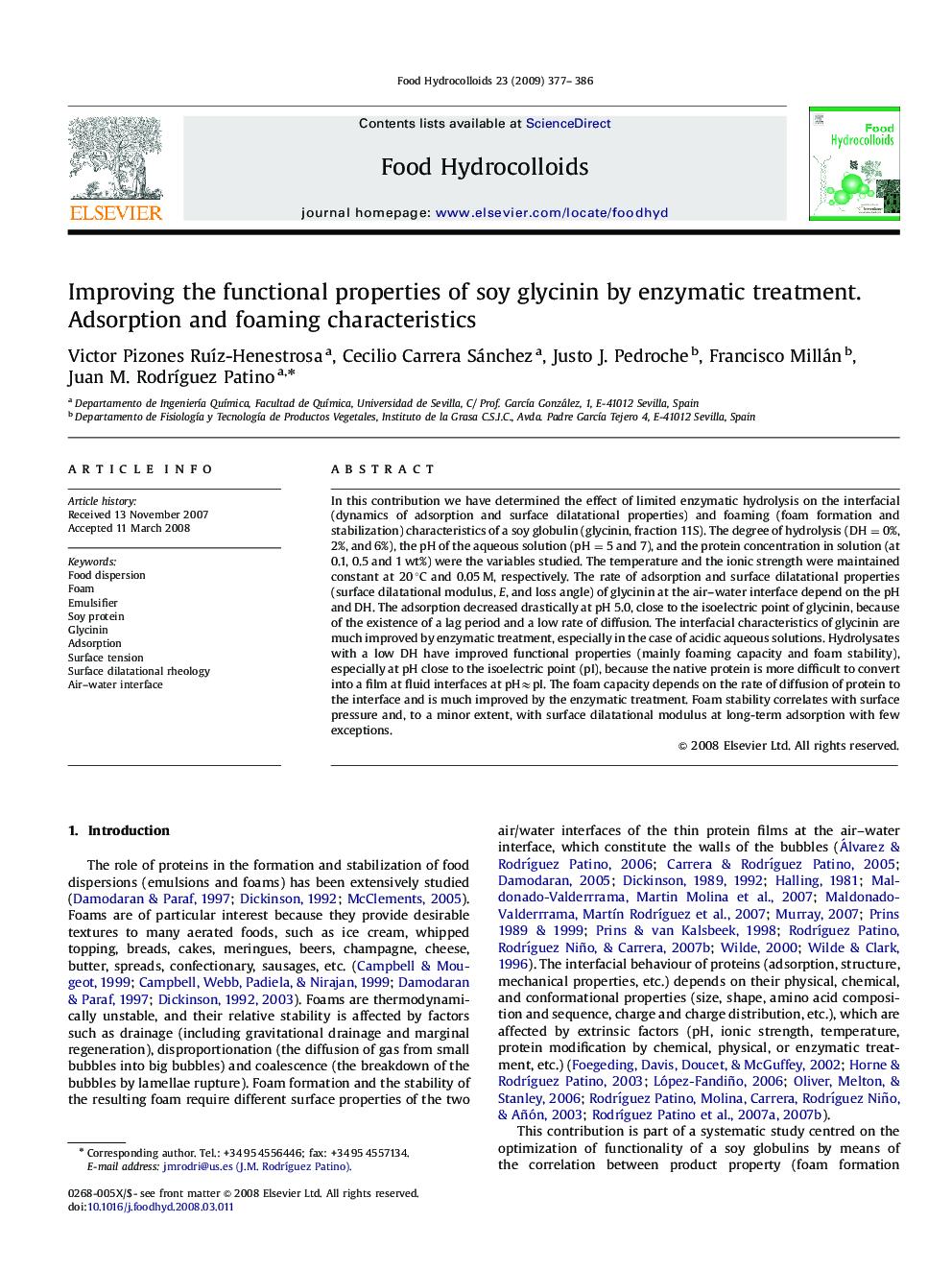| Article ID | Journal | Published Year | Pages | File Type |
|---|---|---|---|---|
| 604951 | Food Hydrocolloids | 2009 | 10 Pages |
In this contribution we have determined the effect of limited enzymatic hydrolysis on the interfacial (dynamics of adsorption and surface dilatational properties) and foaming (foam formation and stabilization) characteristics of a soy globulin (glycinin, fraction 11S). The degree of hydrolysis (DH=0%, 2%, and 6%), the pH of the aqueous solution (pH=5 and 7), and the protein concentration in solution (at 0.1, 0.5 and 1 wt%) were the variables studied. The temperature and the ionic strength were maintained constant at 20 °C and 0.05 M, respectively. The rate of adsorption and surface dilatational properties (surface dilatational modulus, E, and loss angle) of glycinin at the air–water interface depend on the pH and DH. The adsorption decreased drastically at pH 5.0, close to the isoelectric point of glycinin, because of the existence of a lag period and a low rate of diffusion. The interfacial characteristics of glycinin are much improved by enzymatic treatment, especially in the case of acidic aqueous solutions. Hydrolysates with a low DH have improved functional properties (mainly foaming capacity and foam stability), especially at pH close to the isoelectric point (pI), because the native protein is more difficult to convert into a film at fluid interfaces at pH≈pI. The foam capacity depends on the rate of diffusion of protein to the interface and is much improved by the enzymatic treatment. Foam stability correlates with surface pressure and, to a minor extent, with surface dilatational modulus at long-term adsorption with few exceptions.
